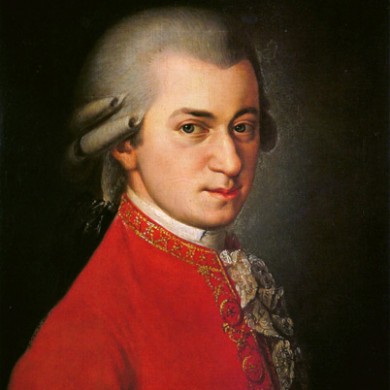Mainly Mozart Festival closes era in eclectic fashion

Despite a beach-perfect Father’s Day Sunday, the Mainly Mozart Festival packed Maurice Gusman Concert Hall to capacity for the finale of their 20th season. Joining regular patrons were a large number of families, including forty children from Miami Music Project’s outreach programs.
Sunday’s concert marked the end of the tenure of leading Mainly Mozart by artistic director James Judd and the Miami Music Project. Executive director Anna Klimata-Pietraszko literally handed over the baton to the new artistic director, pianist Marina Radiushina, joined onstage by Miami Chamber Music Society president Mike Eidson. Together, they will assume the future direction of the festival, and if Sunday’s concert is any indication, that future holds audience-friendly, outside the box programming, slick presentation values, and cross-fertilization with other Miami arts organizations.
Collaborating with pianist Radiushina for her adventurous maiden voyage were Cleveland Orchestra violinist Eli Matthews and gifted cellist Joshua Roman. Musicologist Frank Cooper’s captivating combination of live and video program notes set the proper mood for each of the mostly unknown works, all drawn from the 20th century except for the requisite Mozart.
Mozart’s Piano Trio in C, K. 548 was given an athletic, but sometimes overly boomy rendition, notably in the annunciatory chords of the Allegro. Solo passagework in the development showcased pearly tones in the piano, sublimely shaped cello lines, and feathery but rough-edged tone from Matthews. Matthews’ intonation settled in a bit for the lyricism of the Andante Cantabile, but was outclassed by Roman’s exquisite phrasing. The closing Allegro was the best, jaunty and bright, with playful syncopations, brief moments of intensity, and flashy ornamentation from the whole trio.
Matthews fared better with Leos Janacek’s Sonata for Violin and Piano from 1914. Plunging into the full-bodied, anguished melody, Matthews and Radiushina navigated the sudden mood shifts and blocky formal structure of the work for a passionate read. Matthews demonstrated prodigious range as a performer, veering from extreme delicacy to incisive, biting interruptions of the piano’s flowing melodies. Radiushina’s rounded tone, amped up by the hall, added just the right richness for a meaty emotional experience.
Roman’s solo skills were flaunted in the Presto from Alfred Schnittke’s Sonata No. 1 for Cello and Piano, employing all manner of extended techniques in its ferociously bleak trajectory. Unfortunately, the open piano often overshadowed the cello’s subtle colors.
In contrast, selections from Manuel de Falla’s Siete anciones populares españolas were perfectly balanced miniatures. Roman’s judicious dissonance made for richly hued cantabile lines in Nana and Asturiana, and in Polo, fiery strummed and repeated notes in piano supported Roman’s high register fireworks.
Surprisingly, Astor Piazzolla’s scheduled closing piece was replaced by a ballet premiere, set to Paul Schoenfield’s jazz-inspired Café Music, and choreographed by Miami City Ballet’s Adriana Pierce. The loosened-up trio brought liberal portamento and swing to the thick counterpoint of Schoenfield’s tin pan alley lines. Equally layered choreography matched the music, with intricate, flirtatious lines made corporeal by six Miami City Ballet dancers. With the playful solos, duos and trios of the Allegro, sultry romance of the Rubato, Andante Moderato, and the manic frenzy of the Presto, both ensembles left the audience on their feet.
Posted in Performances
Leave a Comment
Mon Jun 17, 2013
at 11:49 am
No Comments






